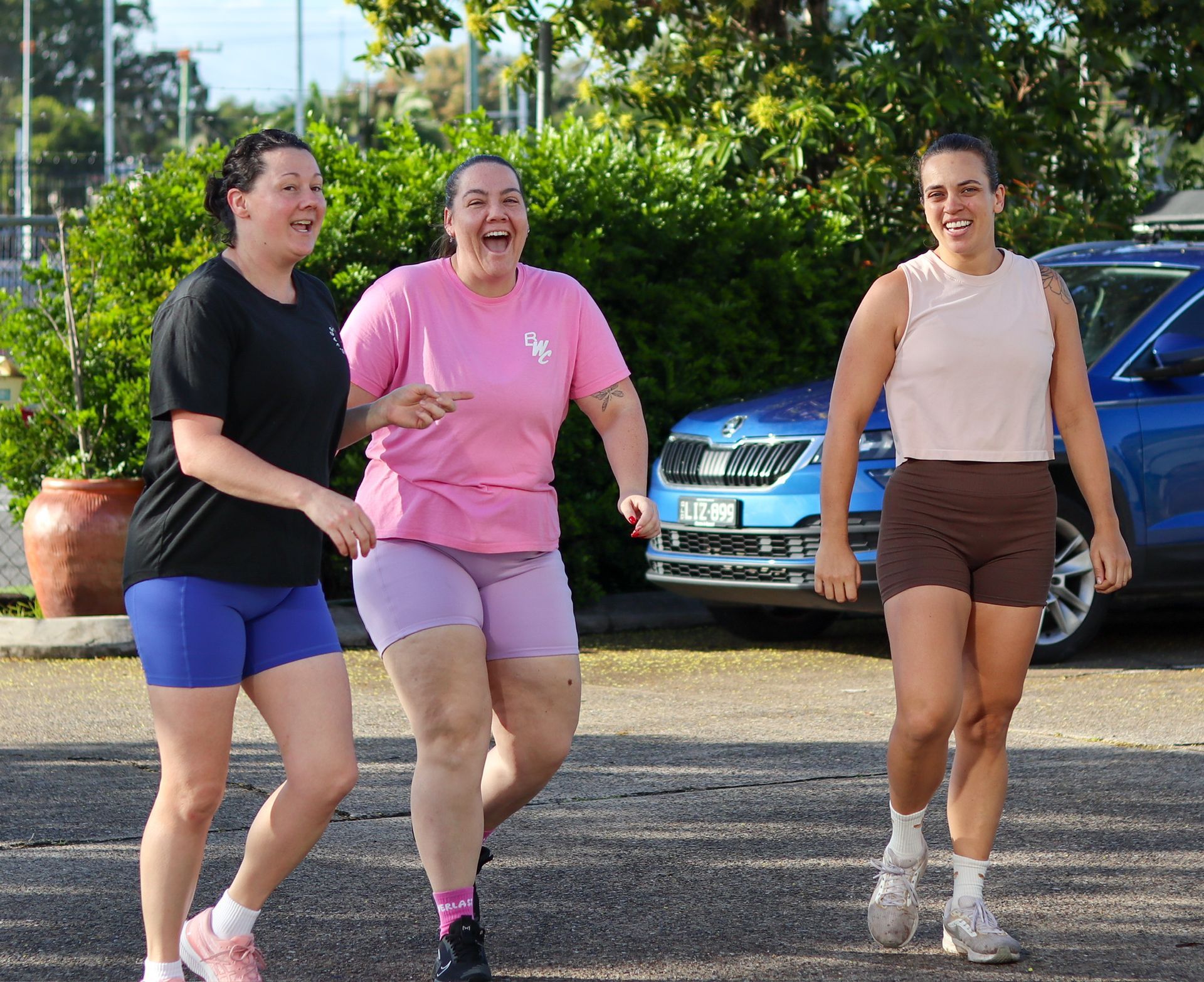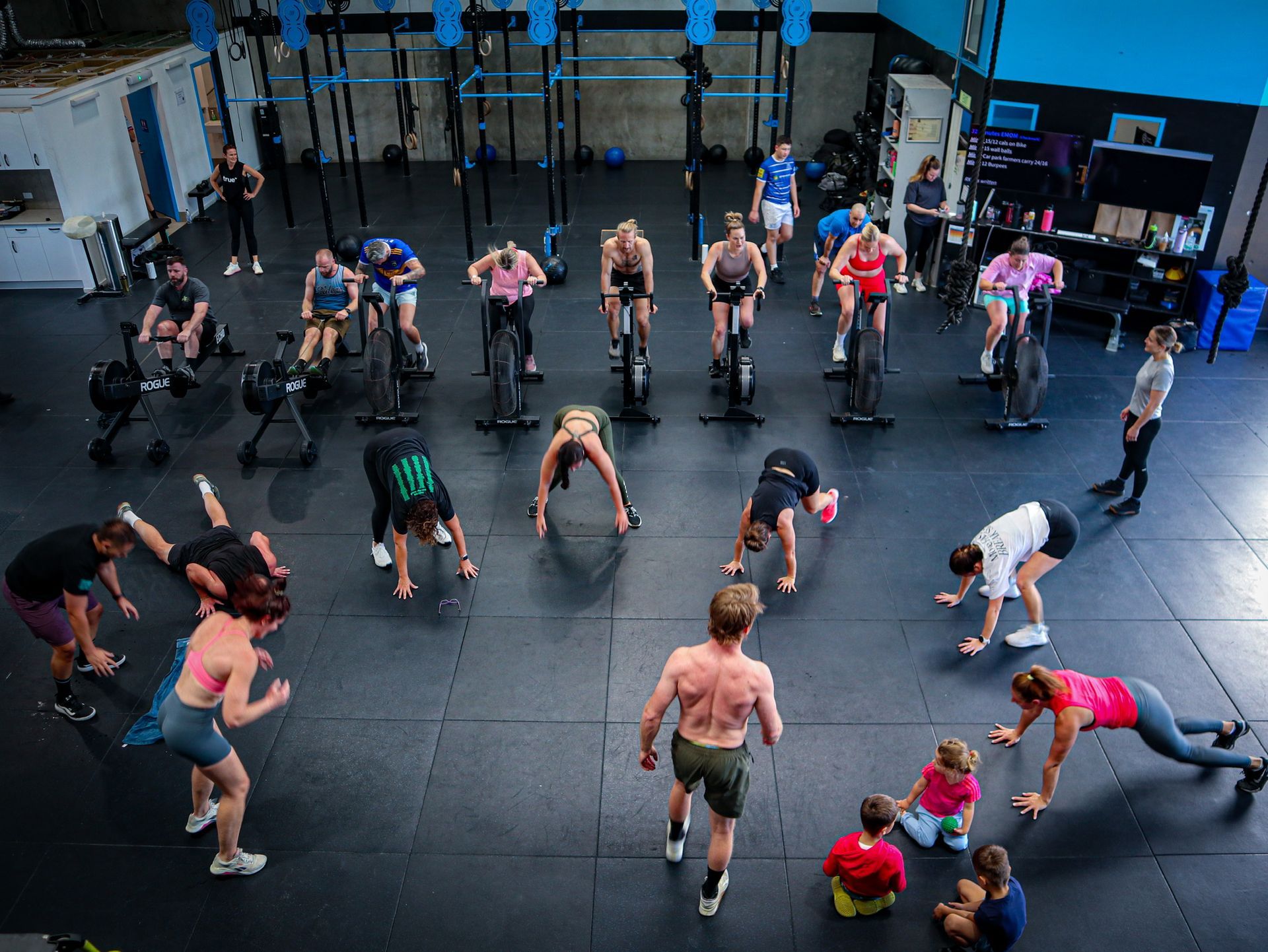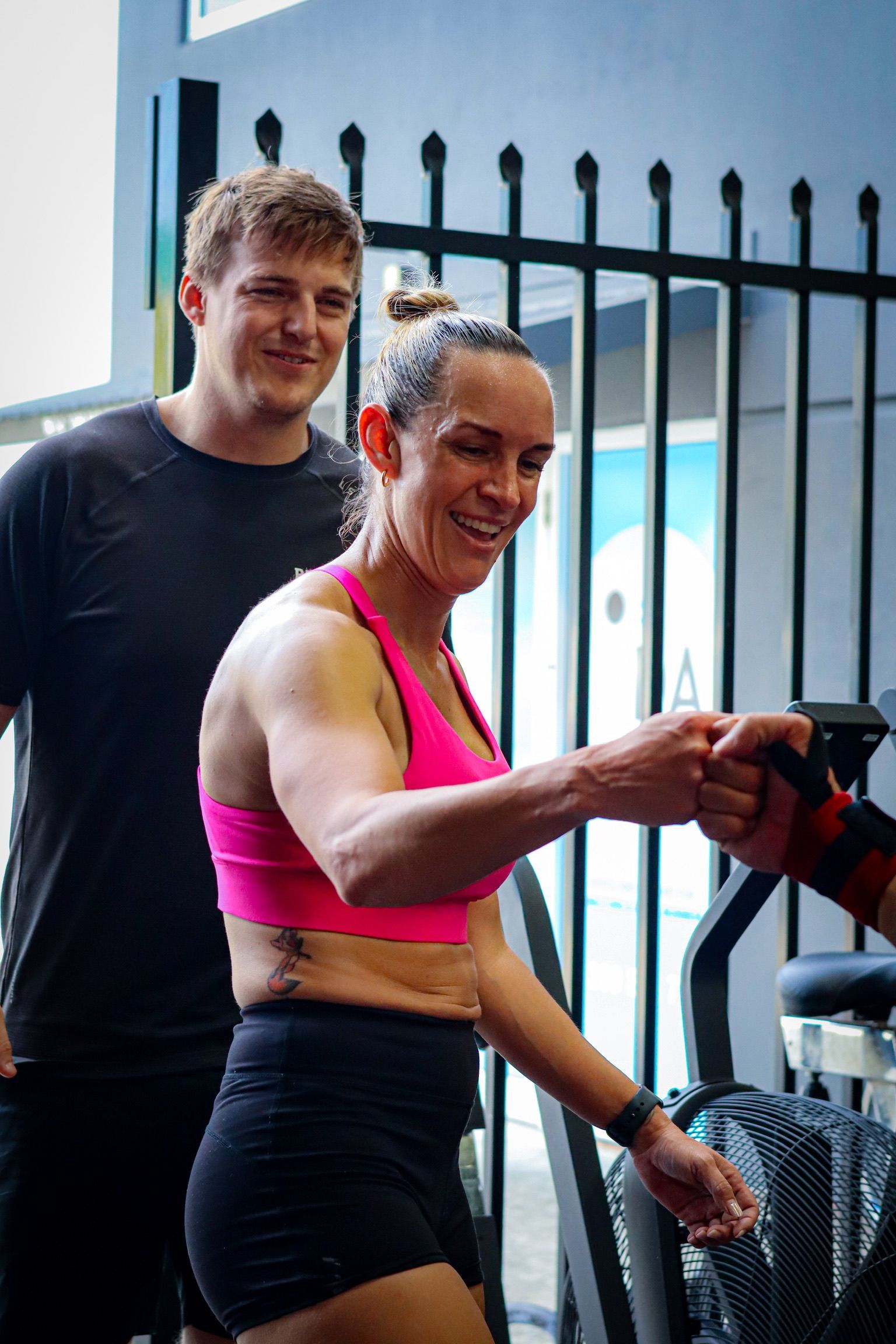How Group Training Can Benefit You Hitting Your Health Goals
Previously, we spoke about the benefits and drawbacks of personal training – when it suits and when it might not be right for you. There are many benefits to both group training sessions and personal training, and ideally, if you have the time and can afford it, it’s worthwhile to opt for a combination of group training and personal training sessions. But if you're weighing up your options, it's worth exploring how to combine the two. Group training, attending classes, is a more cost-effective option, that has social elements, it’s beneficial to build relationships with those in the gym and adds structure to your week. Group settings like at Rebuild Health & Fitness build community, and classes are structured based on programming for the whole gym. On the Rebuild Health & Fitness podcast, coaches James Batey, Sean Carroll and Darius Holliday-Miller discuss the pros and cons of both personal training and group training. Personal training, as previously outlined, is known to be specific and tailored, which will get you bigger results, faster than attending just classes – but as Sean explains, there are good PTs and not-so-good PTs. Sean says: “Going into group training, you can get better results than with poor personal training.” The benefits:Group sessions are more affordable as you’re often only required to pay your gym membership to participate. Attending group sessions offers a higher volume of attendance typically. James explains of group training: “You can do more sessions, so you can get a greater amount of volume, therefore, could lead to greater results. And that’s what it comes down to – having a mix of both, could be an absolute winner if it’s in the same facility.” Sessions are still coached – you’re never alone in the gym and interact with other members, thus offering a social setting. Coaching minutes are less than personal training, so you’re not getting as individualised feedback, however, as James outlines, you’re still being coached in the class setting.“You are coached in every session, so yes there are fewer coaching minutes, but those coaching minutes are very specific,” says James. There’s also something special about suffering together – group training is social and you can interact with other members. James says the benefits: “Community, motivation, interaction – the social side of things is a massive part to group fitness.” Sean agrees, citing the sense of community that gyms establish through group training: “Every group fitness facility will preach about their community; and every group fitness facility has their own community. I think that’s the good thing about it, you get that social connection that you don’t always get in this day and age.” Sean explains that it also often pushes people to work a bit harder in that social setting. He says: “People don’t want to be seen as the one who’s not working in a group environment. It brings everyone up a little - because you’re working hard is going to make me work harder, which will flow on. One person working hard will bring up the group.” The drawbacks:Group sessions can seem daunting if you’re new to a gym, you may not understand movements or styles, and with so many other members in the class, coaches can only focus on so many people. James explains: “People may feel lost, if you haven’t got a great onboarding process. You’re coming into a facility, there are 20 other people on the floor who know what they’re doing – you’re walking in and everyone may be in shape and you’re walking in thinking ‘what have I got myself into here’.” At Rebuild, as part of the onboarding process, all members new to the gym are required to sign up to a personal training programme prior to joining classes – this is to ensure every single member is confident in the movements in class, is comfortable in the gym, and ready to join the Rebuild community. James says: “It’s something we’ve learned over time. You never want people to feel lost.” Often in group fitness facilities, there are limitations on progress for fitness, based on the limitations with the equipment, Sean explains: “Some gyms, there’s no progression – there’s only so good you can get in that facility – because of the equipment available or style of programming.” There are also less coaching minutes per person with group training as opposed to personal training, so if you’re struggling with a movement, it can be difficult to get enough cues from the coaches to nail it. Ideally, a combination of both personal training and group training will get you further – based on your goals. In summary, James says: “There are positives to both – financial versus individualisation. I believe you can get better results doing personal training, if you can afford it and do it enough, and if your PT is good enough.” Group training is great for adding structure and routine to your week – and for making new friends. Tune in to the Rebuild Health & Fitness podcast to hear more, or get in touch with our team to learn more about programming to suit your goals.
Previous Blogs




